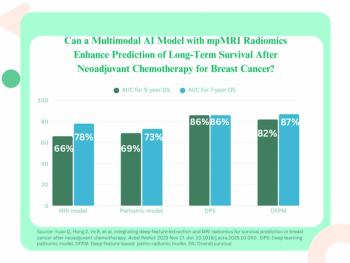
MR imaging challenges CT in gastrointestinal tract
Many problems associated with the gastrointestinal tract occur in young patients. The use of repeated CT scans to evaluate these patients over the course of years is questionable, however, given the repeated exposure to ionizing radiation. MRI is proving to be a reliable tool to image the small bowel as well as the colon, according to Dr. Thomas C. Lauenstein, an assistant professor of radiology at Emory University.
Many problems associated with the gastrointestinal tract occur in young patients. The use of repeated CT scans to evaluate these patients over the course of years is questionable, however, given the repeated exposure to ionizing radiation. MRI is proving to be a reliable tool to image the small bowel as well as the colon, according to Dr. Thomas C. Lauenstein, an assistant professor of radiology at Emory University.
Lauenstein, who spoke at the 2007 European Congress of Radiology, recommends scanning patients in the prone position to depict more of the bowel in coronal images. For maximum patient comfort without compromise of diagnostic quality, sequences should be limited to three:
- 2D TrueFISP without fat suppression;
- 2D single-shot T2-weighted with fat suppression; and
- 3D T1-weighted gradient recall echo with fat suppression, with and without gadolinium.
The TrueFISP sequence highlights bowel wall thickening associated with inflammatory bowel disease. It is also relatively insensitive to motion. The single-shot T2-weighted sequence shows edema, either in the bowel wall or adjacent to it. This sequence is crucial because edema always correlates well with inflammation activity. The T1-weighted GRE sequence gives information about perfused tissue. Consequently, a contrast-enhanced polyp can be nothing else but a polyp, making the technique very specific.
CT can easily be used for patients being evaluated for inflammatory bowel disease, but radiation exposure is a consideration.
"It makes me shiver to see a 30-year-old patient with IBD having undergone 20 CT scans," Lauenstein said.
About 20% of optical colonoscopy exams are incomplete for a variety of reasons, including stenosis. Water as a rectal enema gives nice distention to the ascending colon, allowing evaluation with MRI. MR colonography screening is also feasible-Lauenstein and colleagues showed at last year's ECR a sensitivity and specificity greater than 90% for polyps larger than 1 cm.
The Emory radiologist prefers 1.5T over 3T for MR of the GI tract.
"The latest reports indicate that MRI at 3T is feasible. However, this technique is more prone to artifacts, especially susceptibility artifacts at fluid/gas interfaces," he said. "Three-T MRI of the small bowel is still in its infancy and probably will be refined within the next couple of years."
Newsletter
Stay at the forefront of radiology with the Diagnostic Imaging newsletter, delivering the latest news, clinical insights, and imaging advancements for today’s radiologists.




























